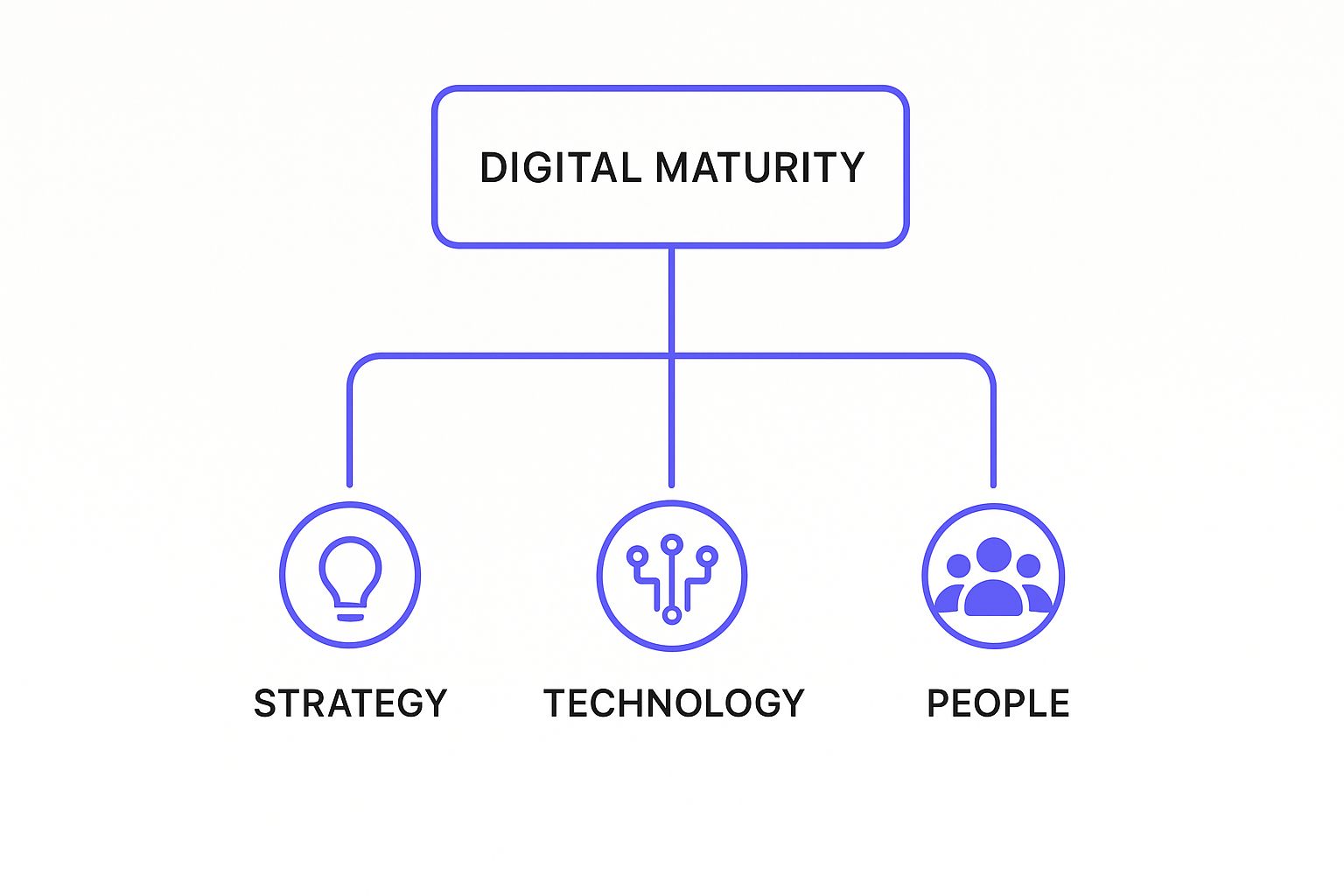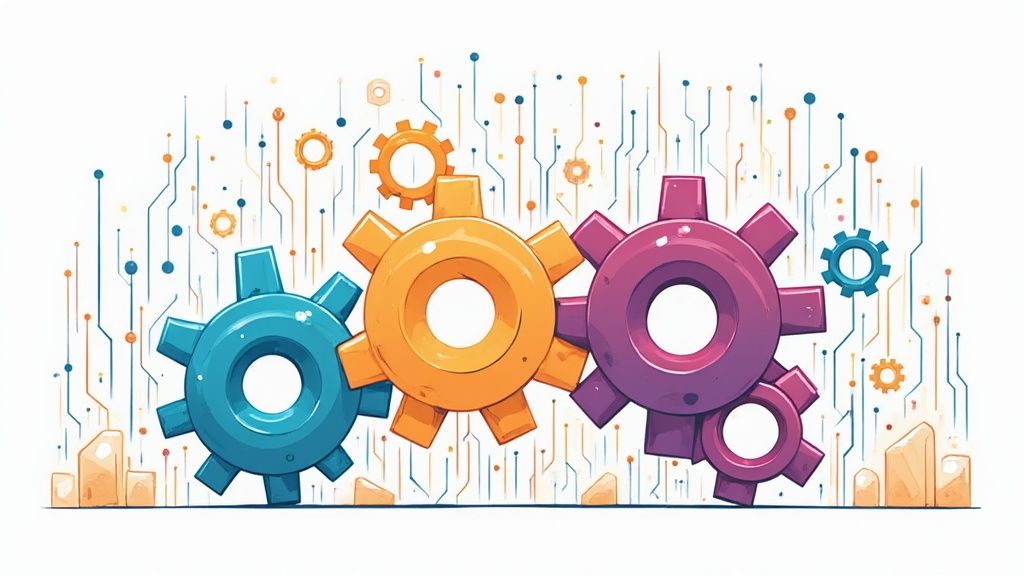Let's be candid. 'Digital maturity' is a term that gets thrown around a lot, but it’s not about buying the latest shiny piece of software. Real digital maturity is about how well your people, processes, and technology work together to achieve your strategic goals and build a business that's more open, capable, and operationally sustainable.
Understanding Digital Maturity Beyond The Buzzwords

Think of it like building a house. You need a solid foundation (your culture and people), a clear blueprint (your processes), and the right set of tools (your technology) to build something that will stand the test of time. Buying expensive tools without a blueprint or a skilled crew just leads to a half-finished project and a lot of wasted money.
This is where the real work begins. We see it all the time: leaders invest heavily in new tech but end up frustrated because nothing really changes. The fancy new CRM becomes a glorified address book. Automation tools gather digital dust. Teams just go back to their old, clunky spreadsheets.
The problem isn't the technology. It's the gap between the people using it and the processes it's supposed to improve.
The three pillars of real maturity
Genuine digital readiness is built on three core elements working in harmony. If one is weak, the whole structure starts to wobble. A frank look in the mirror usually shows where the friction really is:
- People. Do your teams have the skills and, just as importantly, the mindset to adapt? Is there a culture of collaboration and data-led decisions, or are silos and resistance to change the norm?.
- Process. Are your workflows clear, efficient, and consistent? Or are they a tangled mess of manual workarounds, duplicated effort, and operational fog?.
- Technology. Do your systems actually help your people and support your processes? Or do they create more headaches with disconnected platforms and features nobody uses?.
True transformation starts with people, not platforms. The goal is to clarify decisions and embed capability that lasts—leaving ownership and sovereignty inside your organisation.
The role of digital maturity consulting
This is where digital maturity consulting comes in, acting as the expert architect for your project. The real job is to diagnose the root causes of inefficiency, not just slap a plaster on the symptoms with another software subscription.
It’s about taking a step back to see the whole picture, mapping out how work actually gets done, and pinpointing the blockers that are slowing everyone down. By understanding the interplay between your people, processes, and technology, we can build a clear, actionable plan.
This approach stops you from wasting money and makes sure any changes you make will actually stick. Instead of just recommending another tool, the focus is on building capability within your own team. We equip them with the skills to own their processes and get the most out of the tech they already have. For a deeper look into this concept, you can explore our guide on understanding your digital maturity for business growth.
Ultimately, the outcome isn't just a new system. It's a more resilient and efficient organisation where your team has more time, sharper decisions, and greater confidence.









